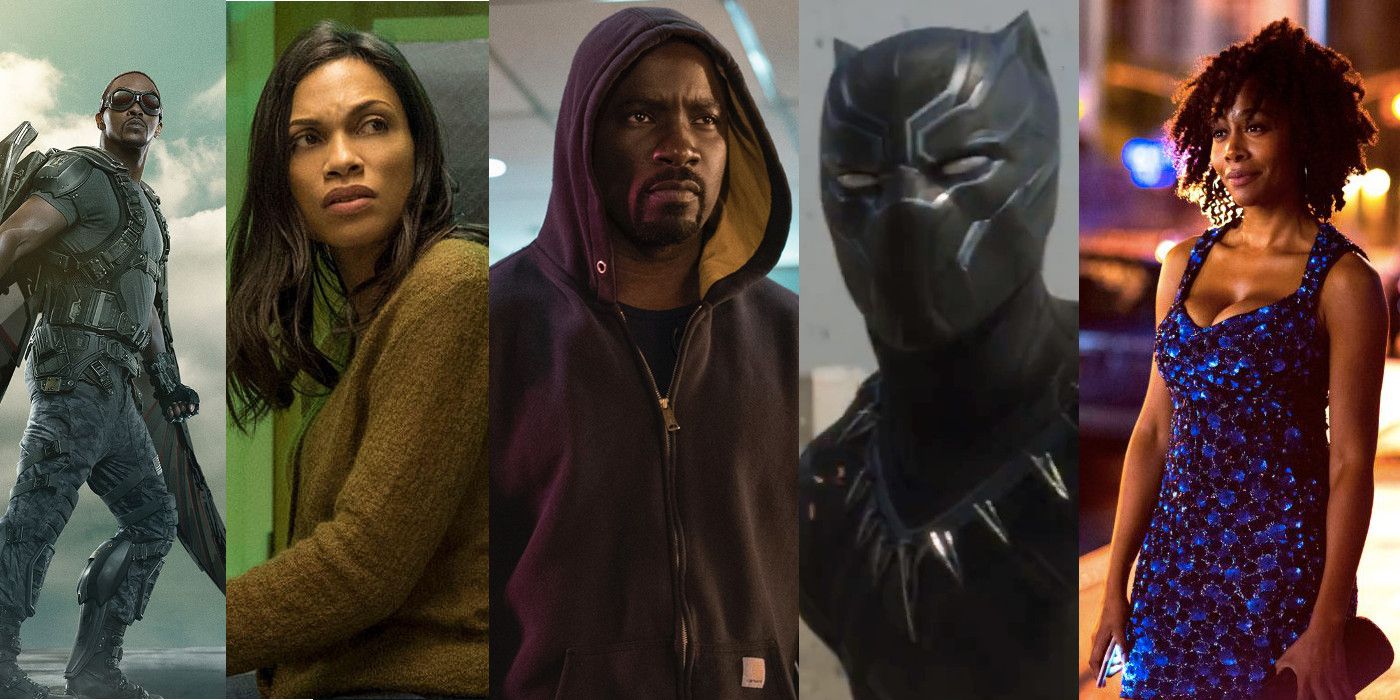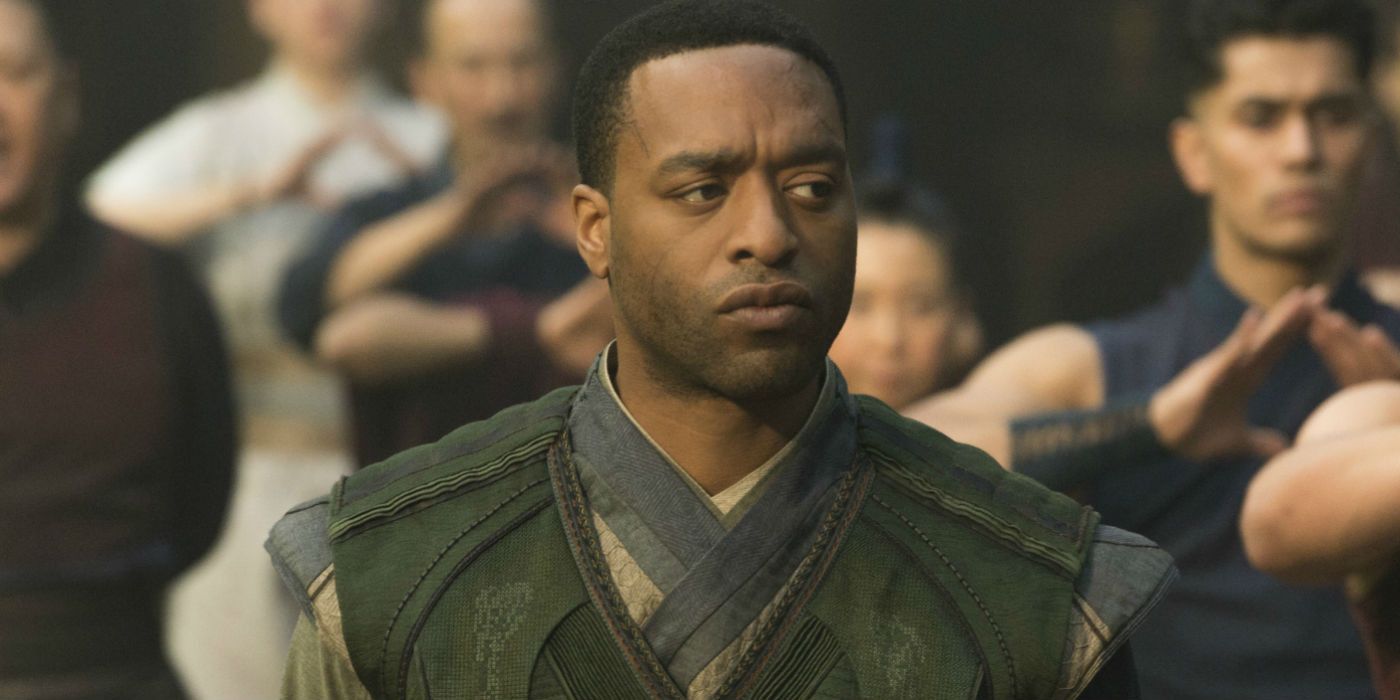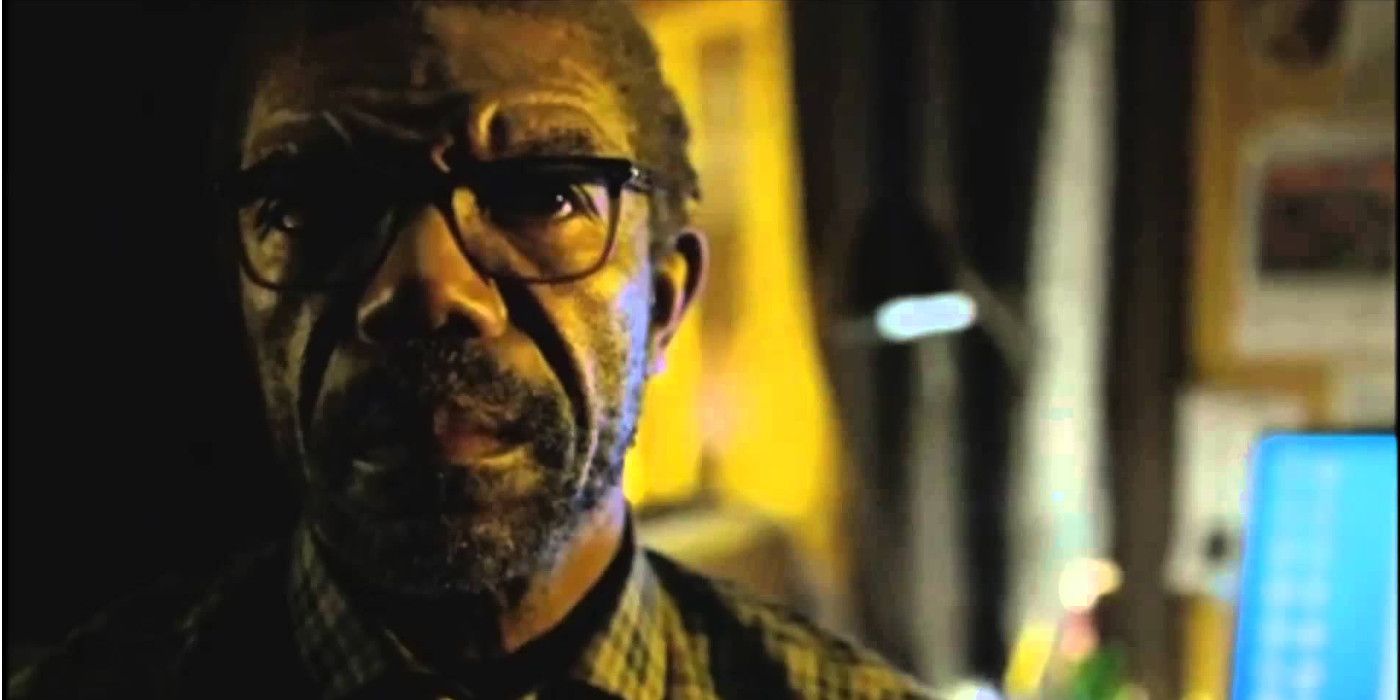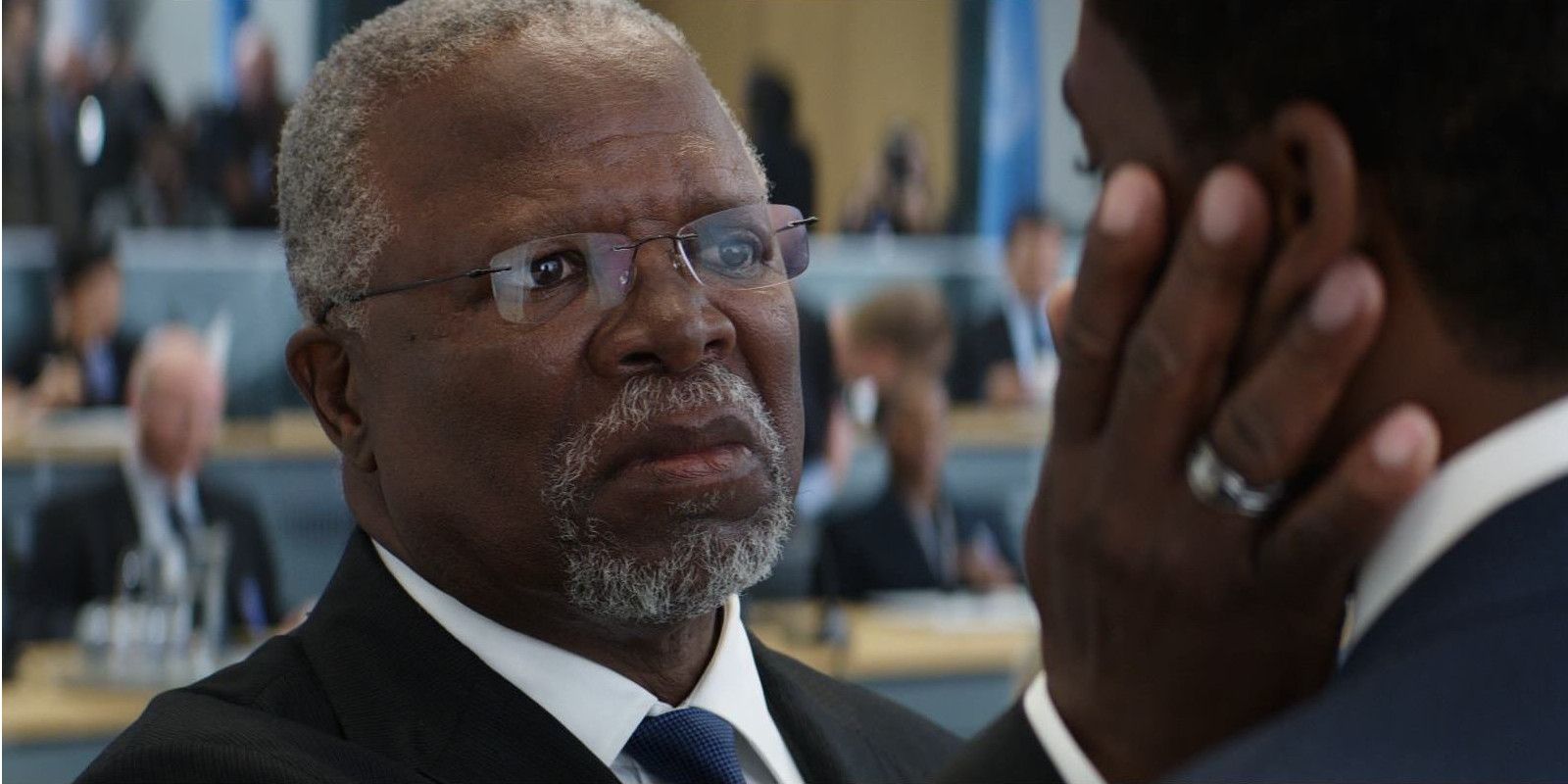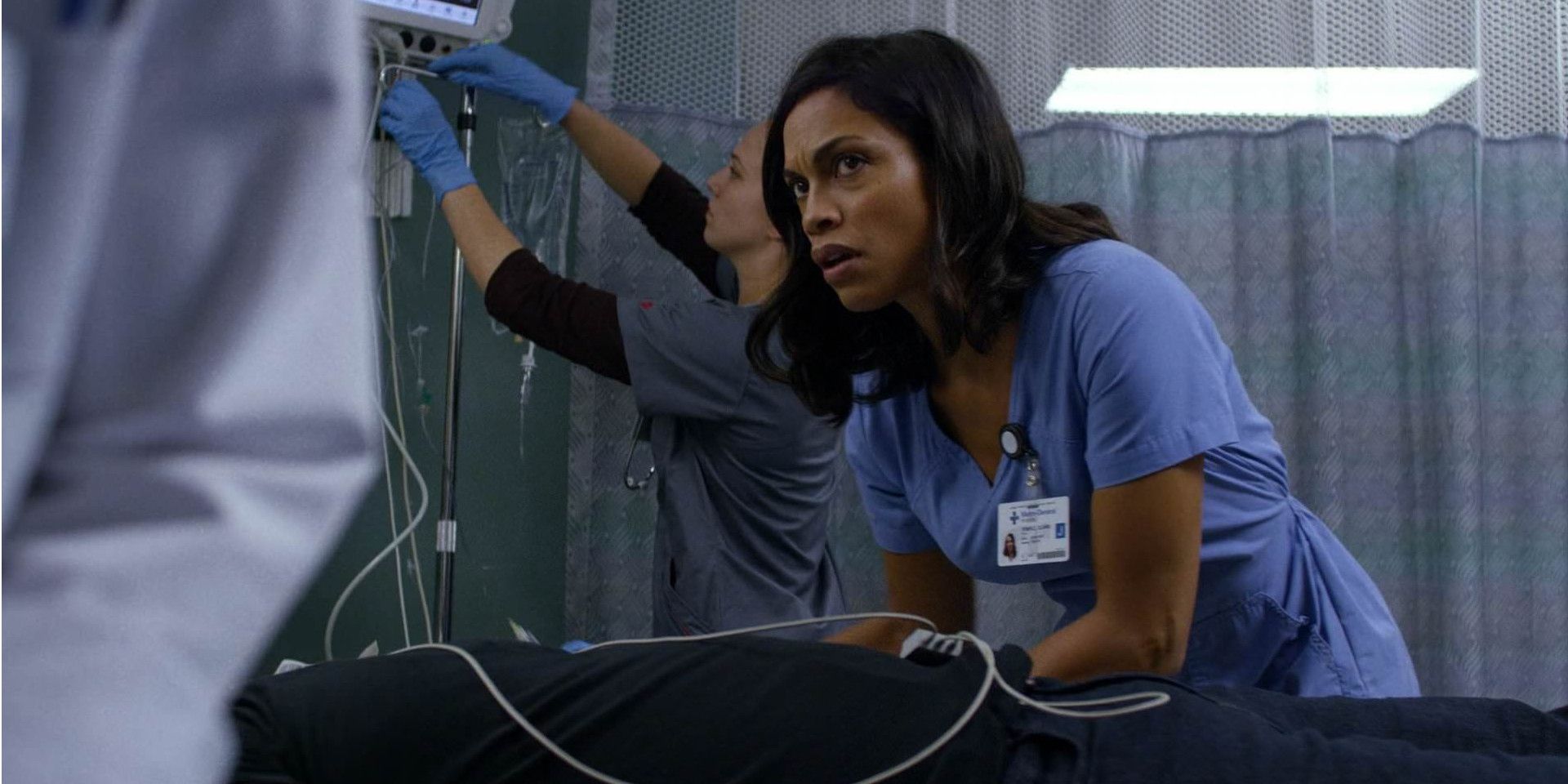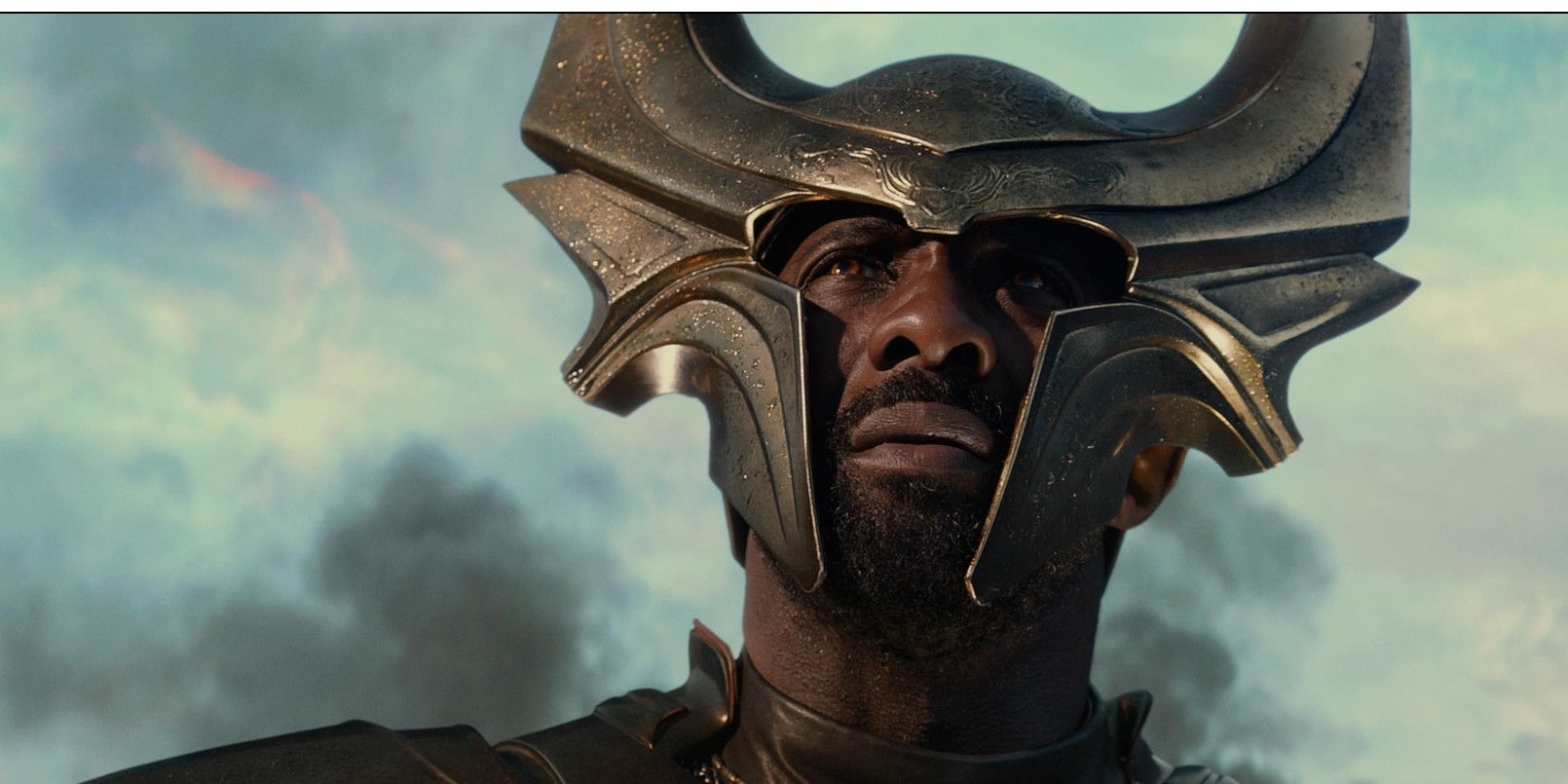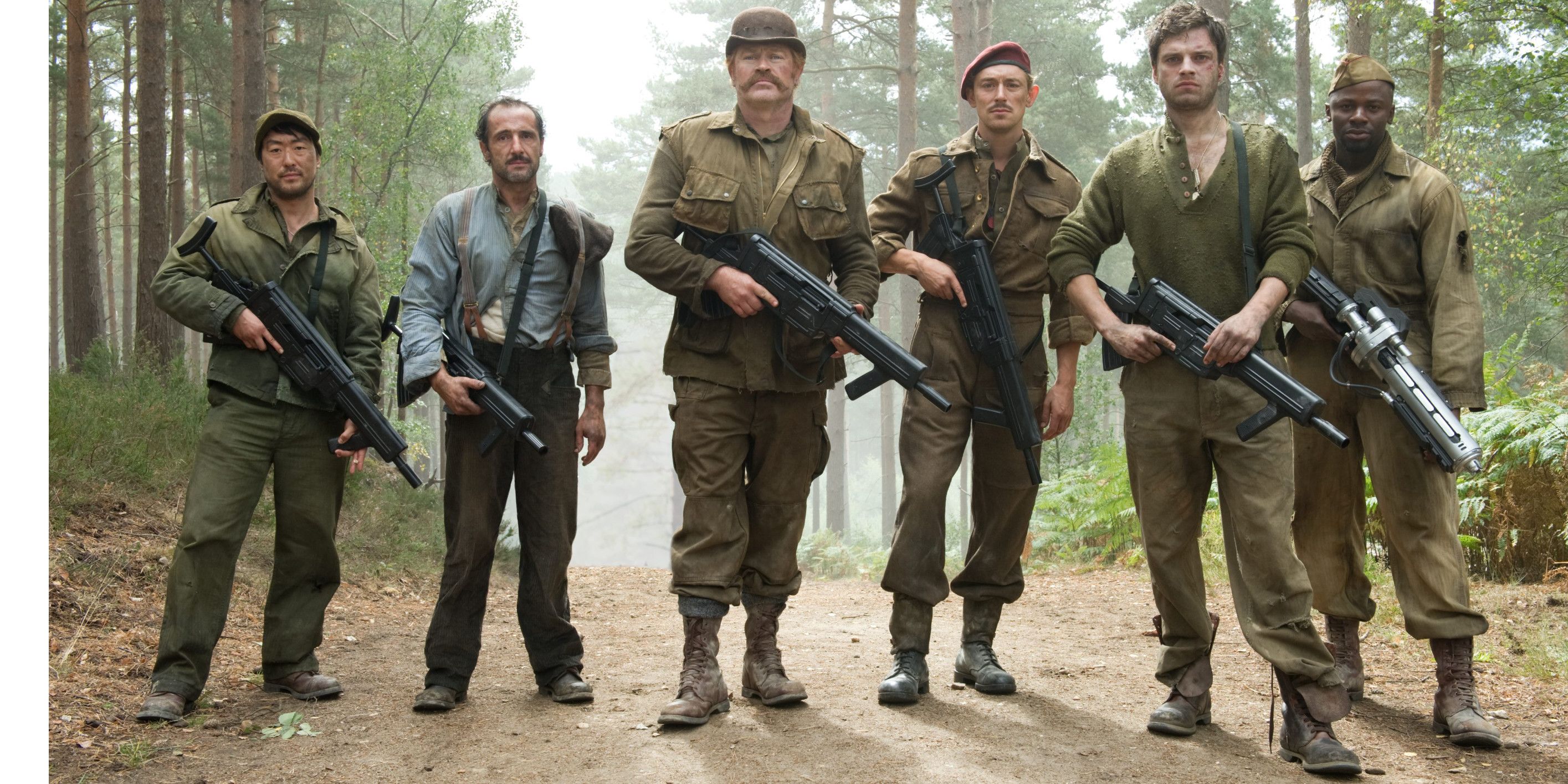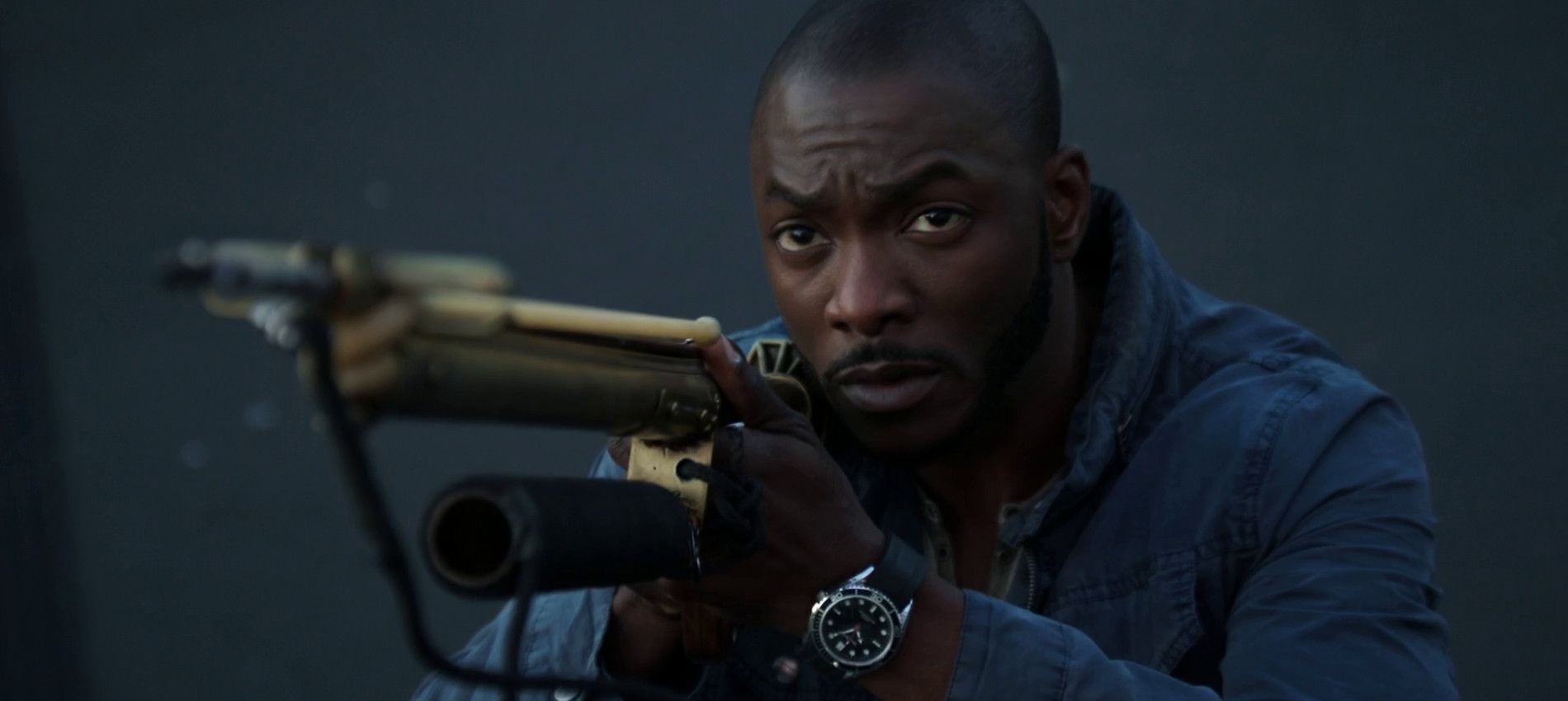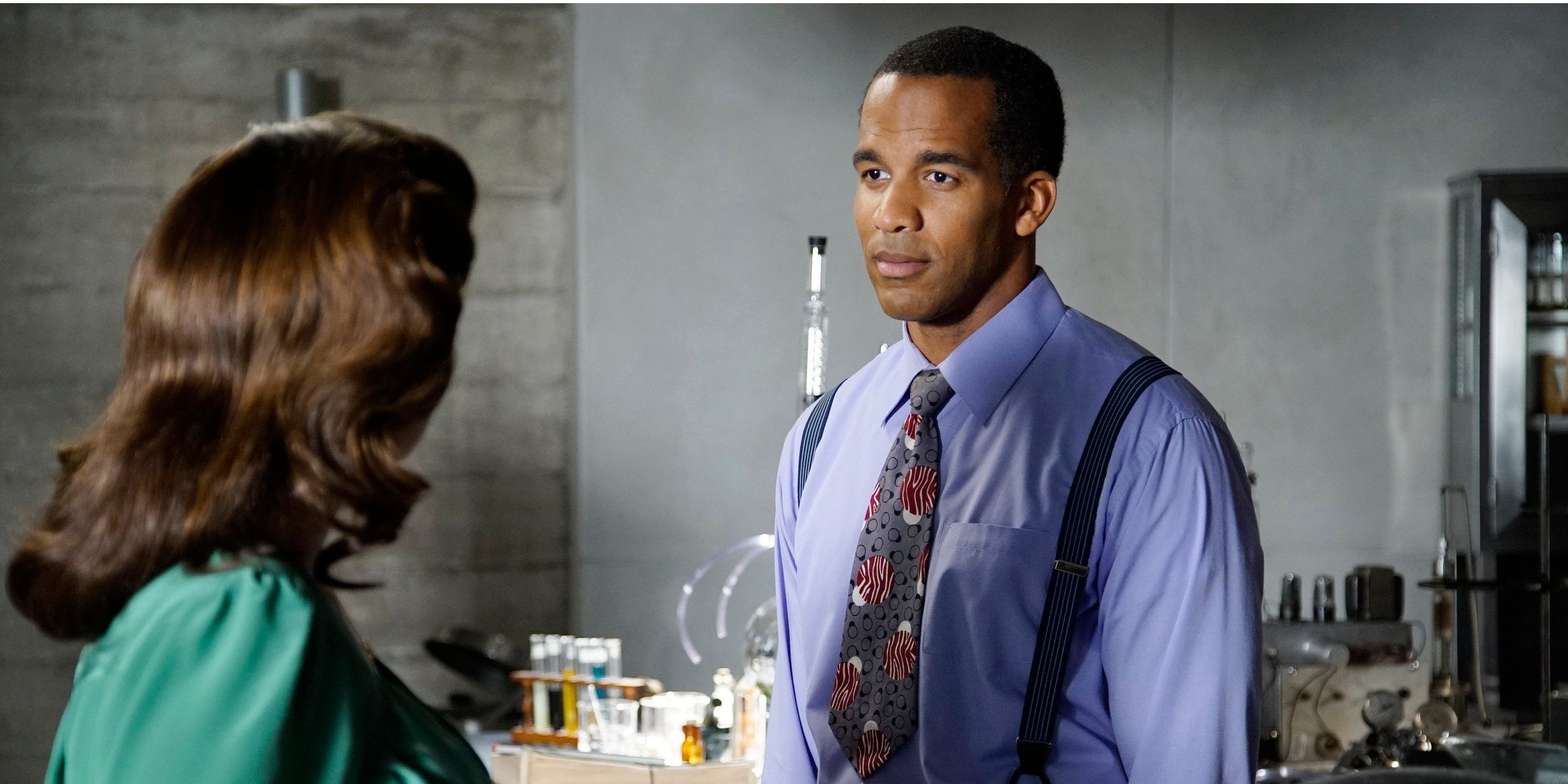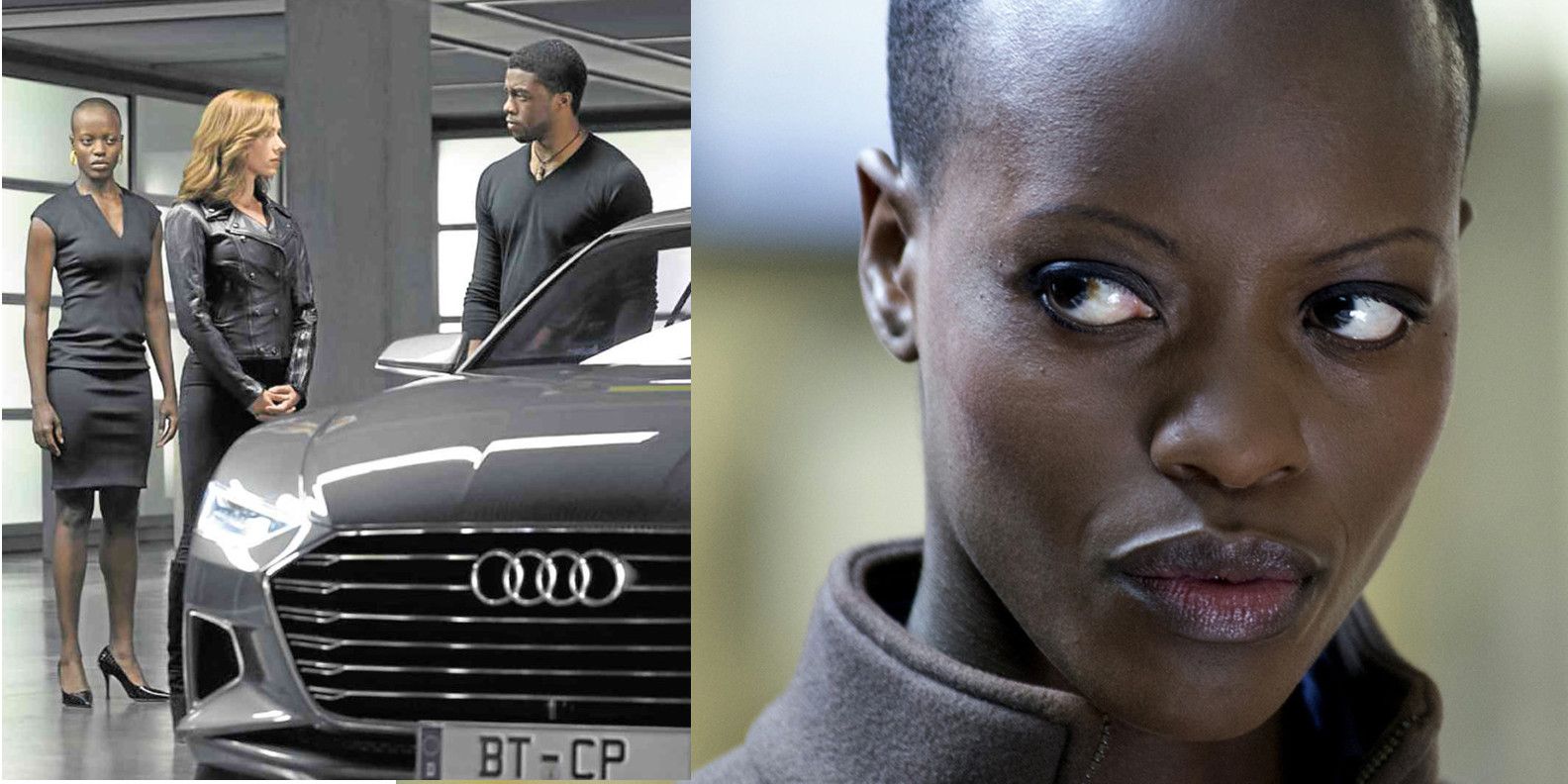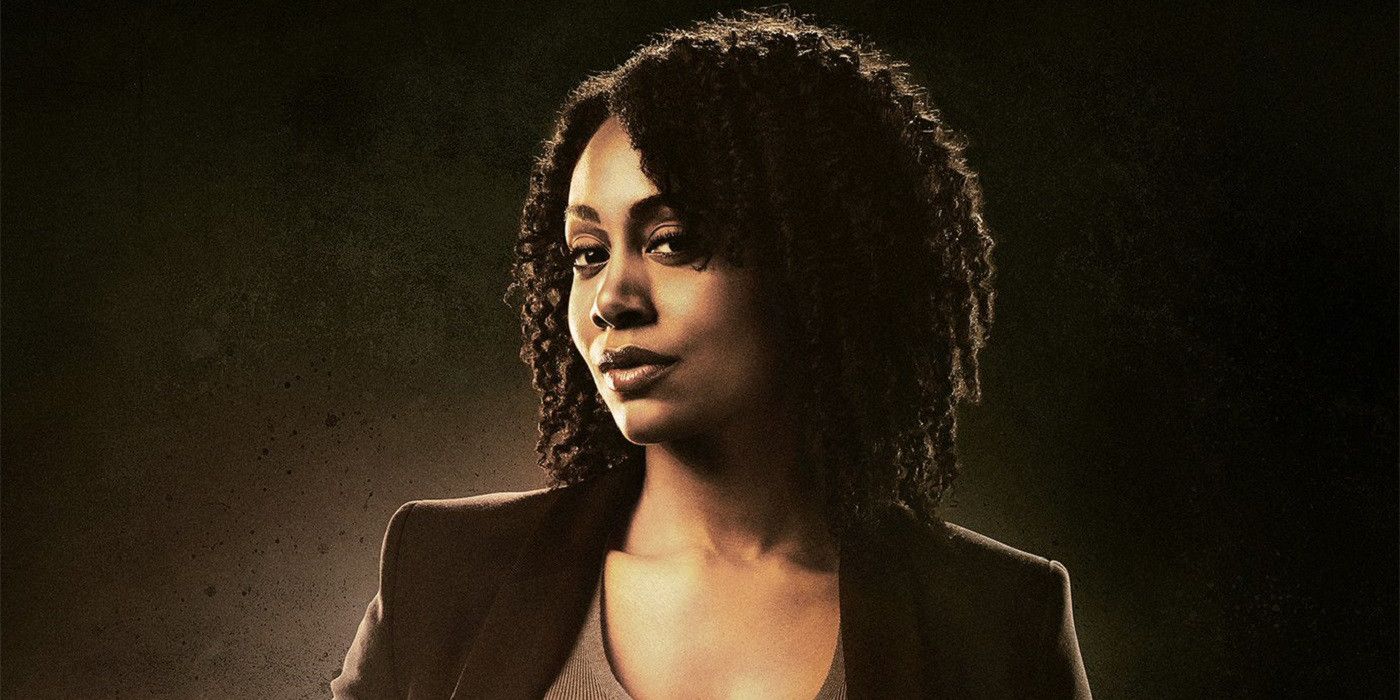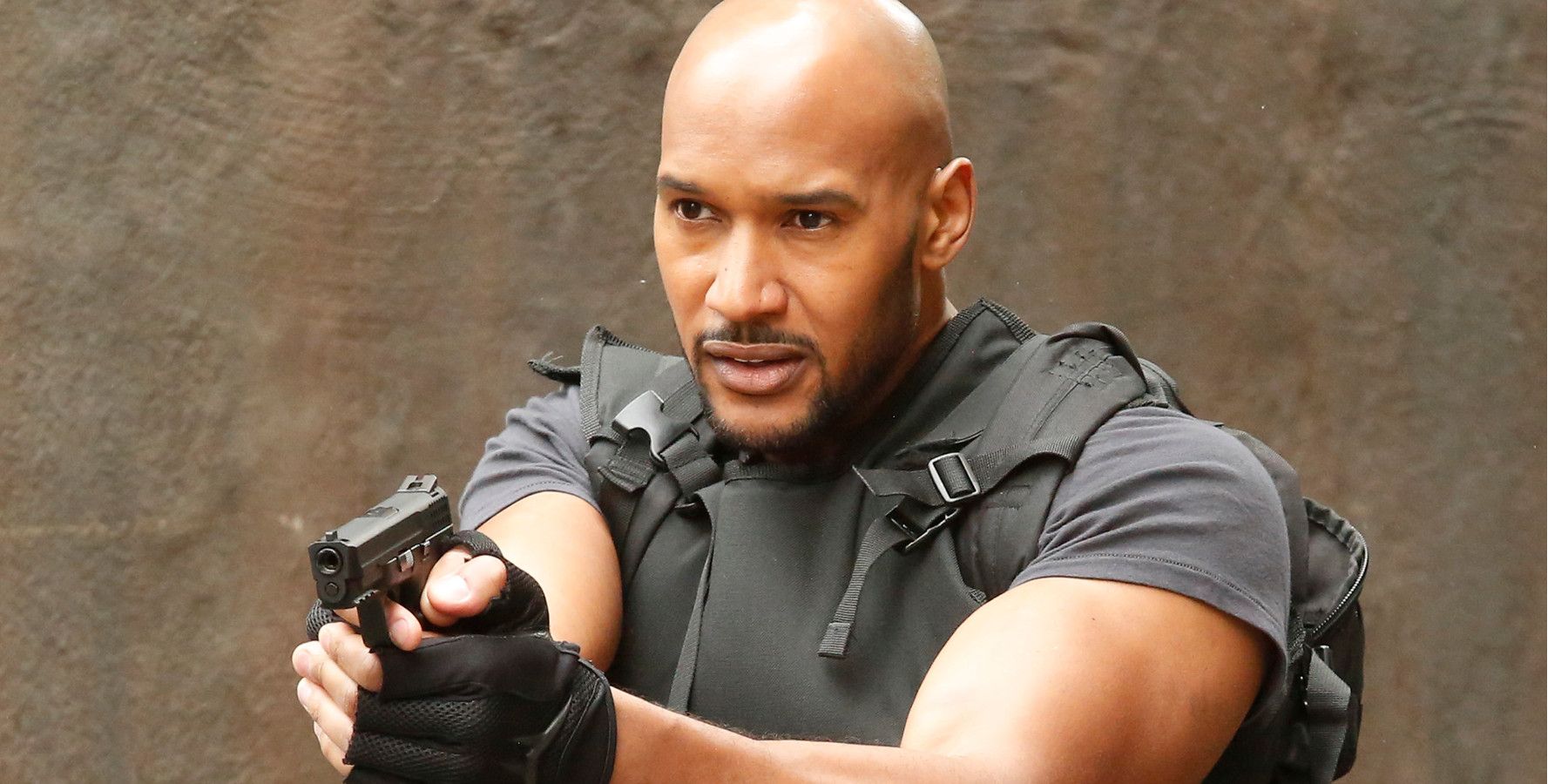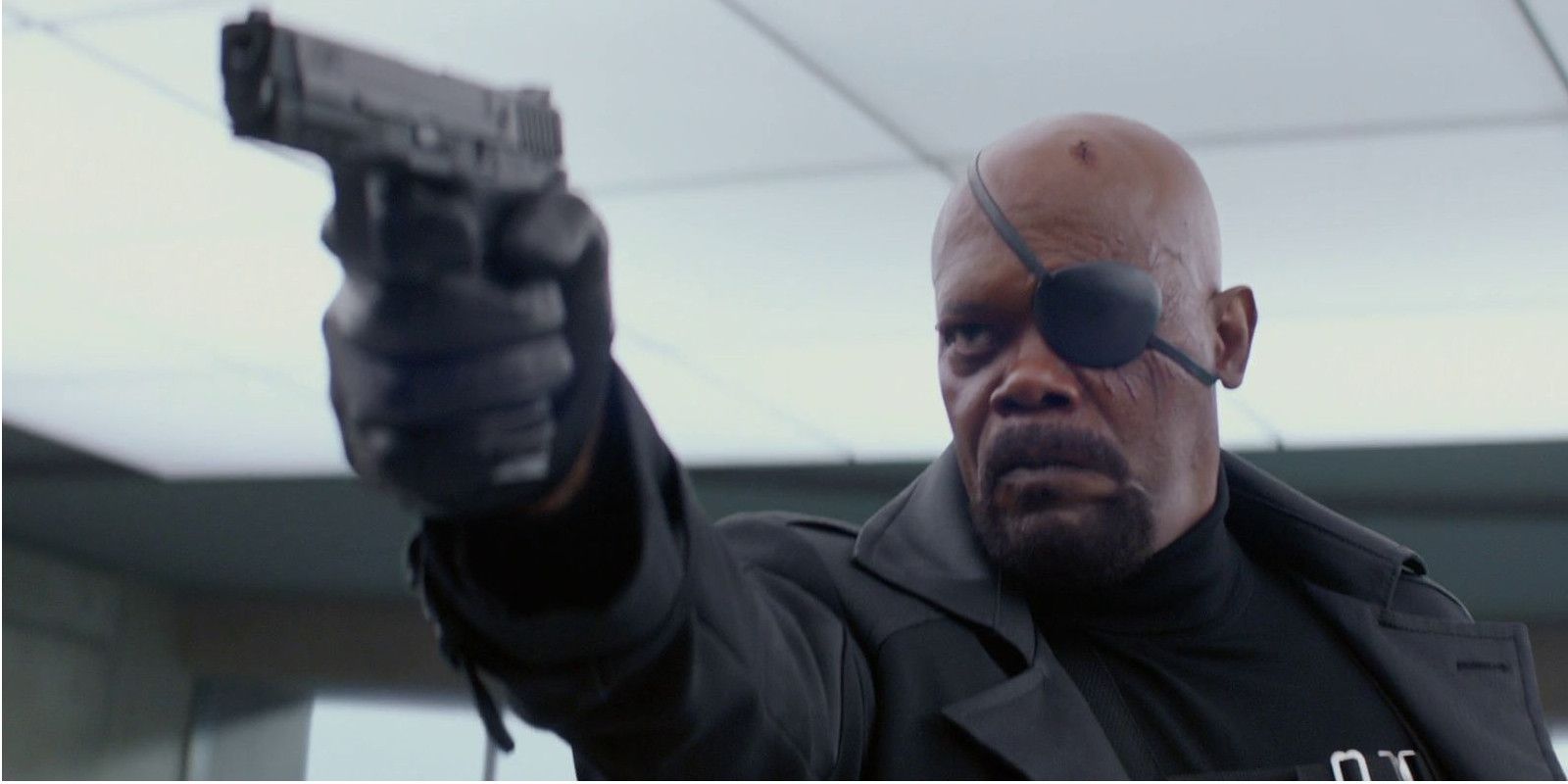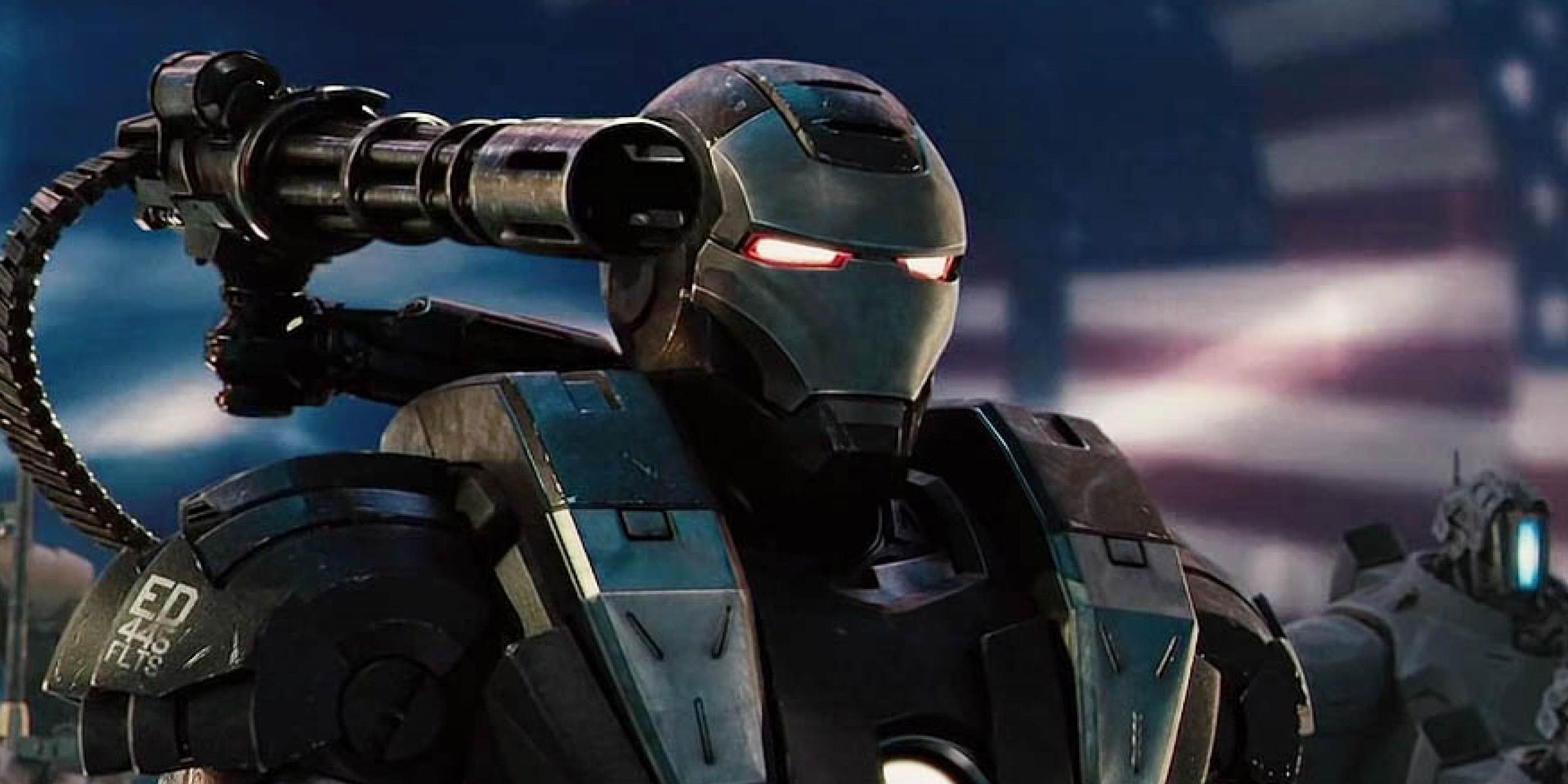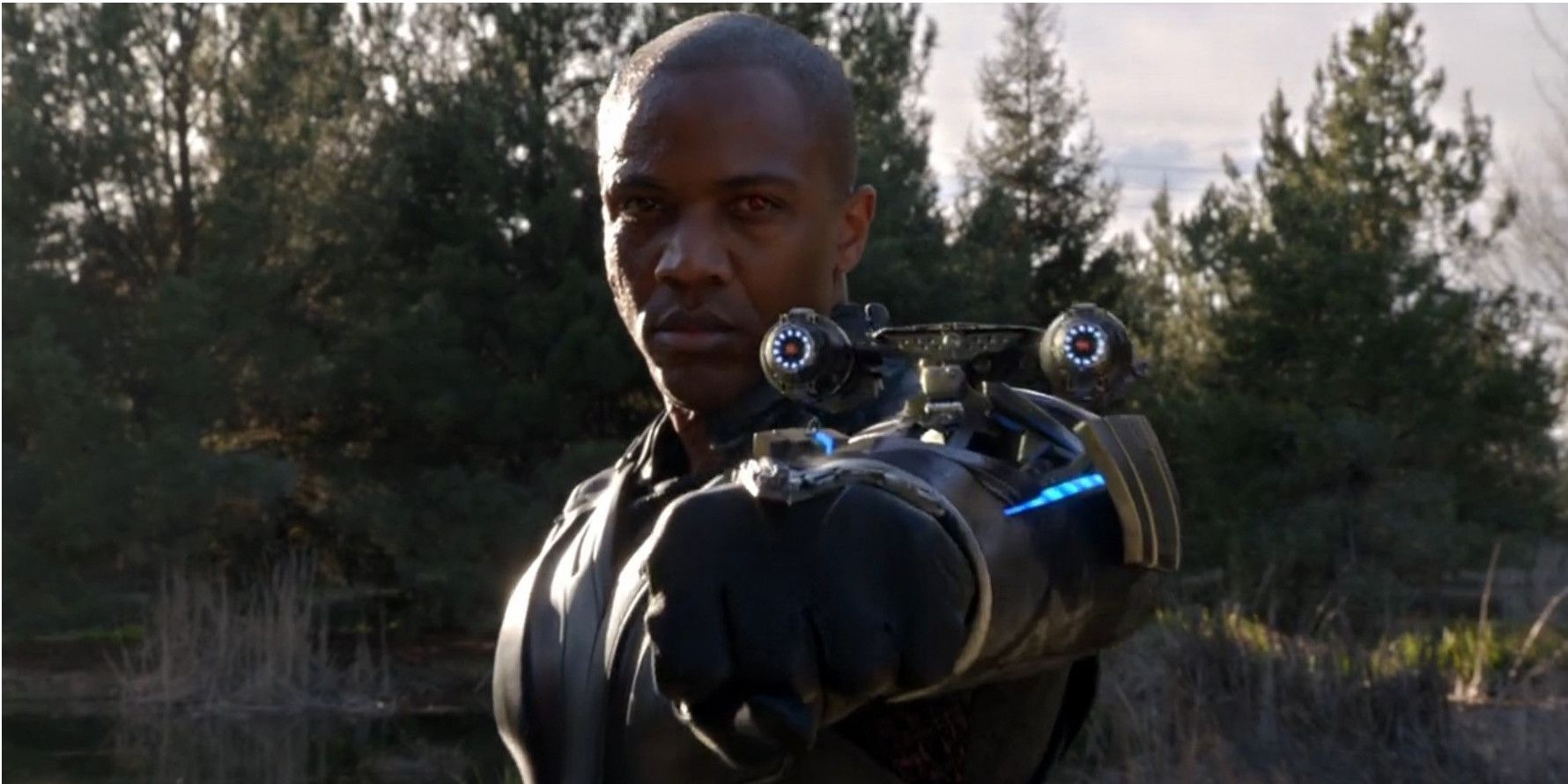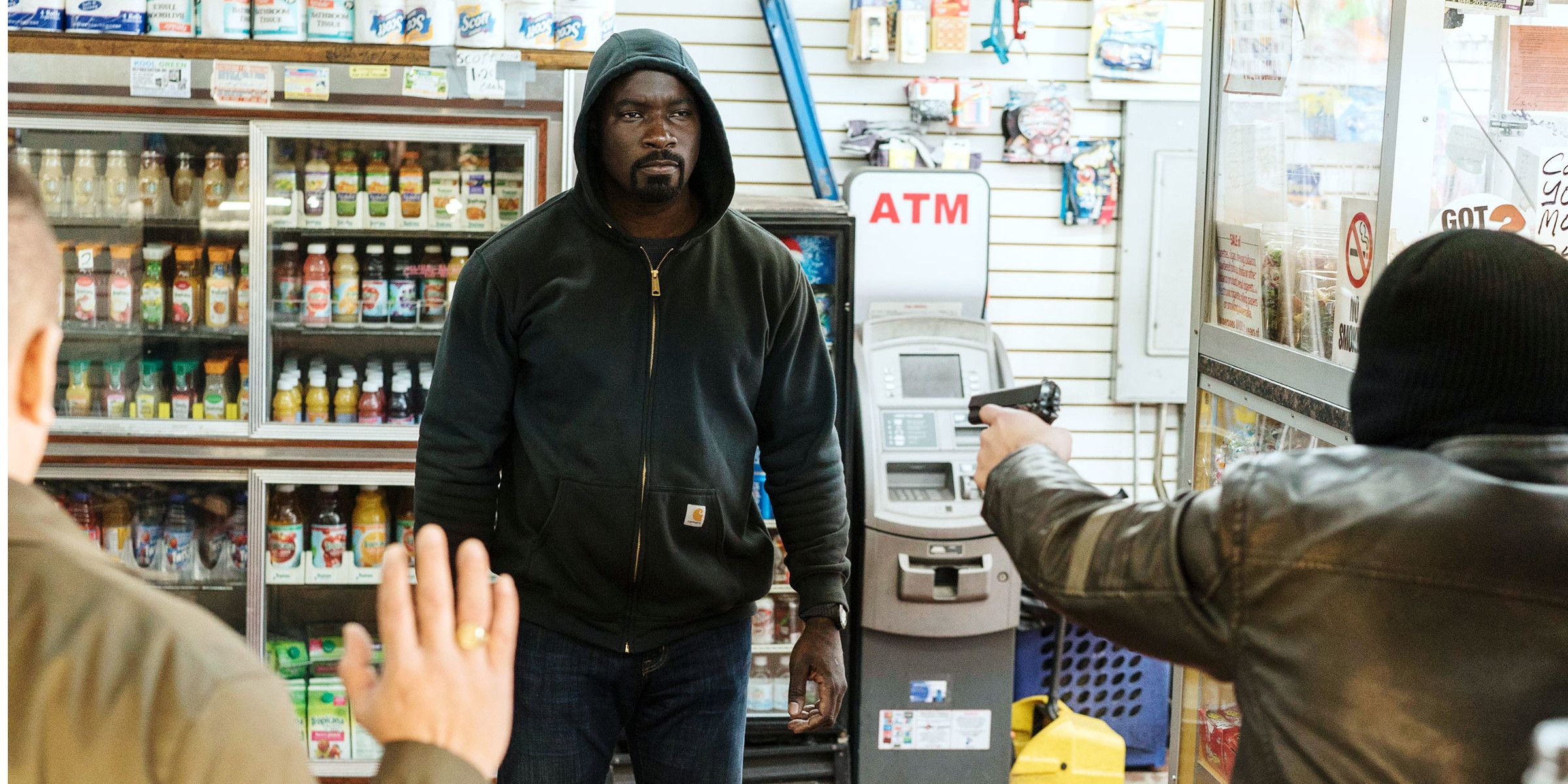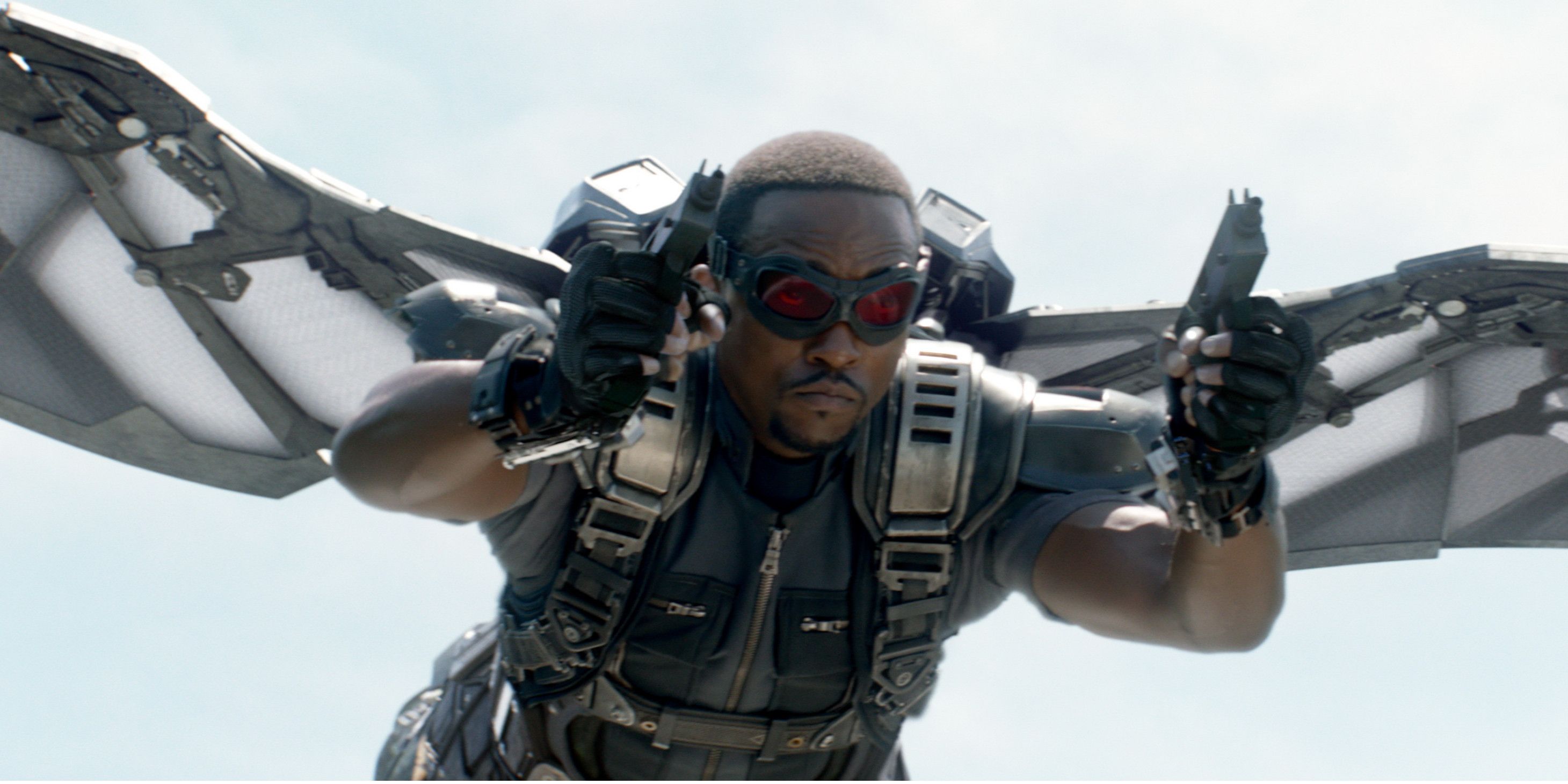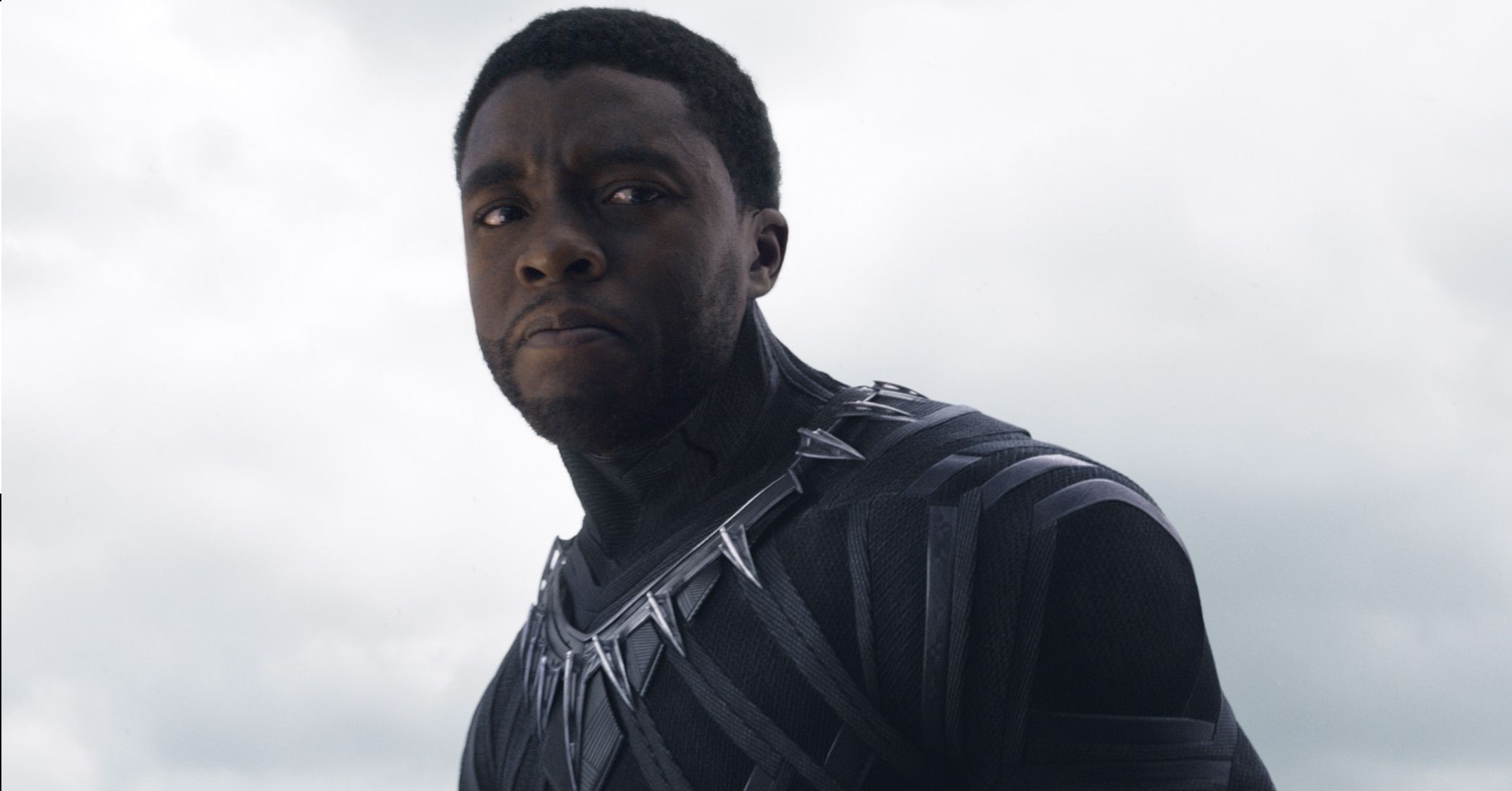With the upcoming "Iron Fist" and "The Defenders," Netflix adds two more pieces to the world being built in the Marvel Cinematic Universe. These shows follow "Luke Cage," headlined by a strong Black character and supporting cast members who also are Black.
RELATED: 15 Amazing Latino Superheroes (and Villains)
Indeed, with sister shows "Daredevil" and "Jessica Jones," ABC's "Marvel's Agents of S.H.I.E.L.D." and "Agent Carter" and the various feature films, the MCU is populated with multiple African-American and African heroes and supporting characters who serve the cause of justice. Several fight in costume with their fists and feet, some engage covertly in espionage, and still others work with their wit, words and skills -- and sometimes make heavy sacrifices in doing so. Here are 17 of Marvel's Black Defenders.
17 MORDO
The "Doctor Strange" movie took some liberties with the supporting characters and backstories, taking some heat for casting Tilda Swinton as The Ancient One. But it also cast British actor Chiwitel Ejiofor, of Nigerian parentage, as Mordo. Mordo first appeared in the Dr. Strange feature in 1963's "Strange Tales" #111, in a story written by Stan Lee and drawn by Steve Ditko. From the beginning, Mordo was presented as a mustache-twirling antagonist to Doctor Strange, but the film takes a different tack.
Here, Mordo is an ally of The Ancient One, and overcomes her objections to Strange joining their order. Mordo also trains Strange in the mystic arts and becomes his mentor. But Mordo becomes alarmed at the ways in which Strange wields his nascent powers, and further has his faith in The Ancient One shattered after learning the source of her longevity. The end of the film implies Mordo will completely turn from ally to antagonist in future stories, even if his reasoning is founded in altruistic fairness.
16 BEN URICH
Ben Urich's greatest superpower is his belief in the First Amendment. In the first season of "Daredevil," Urich, an investigative journalist for the "New York Bulletin," has a number of exposes of organized crime under his belt. But he regularly clashes with editor Mitchell Ellison, and struggles to afford care for his wife, who suffers from dementia and physical woes. Karen Page, secretary to attorneys Matt Murdock and Foggy Nelson, comes to Urich seeking his help in investigating a new criminal organization at work in Hell's Kitchen.
Tired and disillusioned, Urich initially refuses but comes around, and learns the new crime boss is Wilson Fisk, the Kingpin. Urich's efforts bring him into contact with Page, Nelson and Murdock, both as a civilian and as Daredevil. Urich is fired after criticizing Ellison for killing an article exposing the Kingpin as a murderer, but keeps working on the story. After Urich interviews the Kingpin's mother, Fisk comes to Urich's home and strangles him to death, making him a martyr for truth. There is no finer hero than that.
Ben Urich first appeared in 1978's "Daredevil" #153, in a story written by Roger McKenzie, drawn by Gene Colan and inked by Tony deZuniga.
15 KING T'CHAKA
King T'Chaka is ruler of Wakanda and father of T'Challa, the current Black Panther, first appearing in "Fantastic Four" #53 in a story written by Stan Lee and drawn by Jack Kirby and Joe Sinnott. T'Chaka served his nation not only as king, but as The Black Panther, following in the footsteps of his father, King Azzuri the Wise.
In "Captain America: Civil War," T'Chaka makes a move away from Wakanda's traditional isolationist policies, intending to have the nation sign onto the Sokovia Accords that would regulate superhero activity. He and T'Challa attend a United Nations summit in Vienna where the accords are to be ratified. T'Chaka speaks to the assembly about what motivated the change of heart -- an explosion in Lagos, Nigeria targeted against the Avengers that accidentally killed Wakandan aid workers -- as well as Wakanda's responsibility to lead by example. But while T'Chaka is speaking, the summit is bombed and he is killed, making T'Challa the new king. Security footage indicates The Winter Soldier was to blame, sending T'Challa on a quest for vengeance. T'Chaka was played by John Kani.
14 CLAIRE TEMPLE
Claire Temple, played by Rosario Dawson, is a utility player in Marvel's Netflix TV series, appearing in "Daredevil," "Marvel's Jessica Jones" and "Luke Cage." She is slated to appear in "Iron Fist" and the crossover series "The Defenders." In "Daredevil's" first season, Temple, a night-shift nurse at the Metro-General Hospital emergency department, treats his injuries after he is left in a dumpster. She winds up quitting the hospital by the end of the second season and treats Luke Cage at the behest of Jessica Jones on that show. On "Luke Cage," they develop feelings for each other, but the relationship is thwarted when Cage is sent back to prison.
The MCU version of Temple is a mix of two Marvel Comics characters: Claire Temple, a doctor who has a romantic attachment with Luke Cage through much of the "Luke Cage: Hero for Hire" and "Luke Cage: Power Man" series, and Linda Carter, the Night Nurse, who provides under-the-table medical treatment to injured superheroes. In both series, and on TV, Temple has proven herself to be loyal, honest and able to do things others simply can't or won't do, all in the face of powers much larger than herself.
13 HEIMDALL
Heimdall is a stalwart figure from "Thor," as the guardian of the Rainbow Bridge into Asgard. He bears this duty because he possesses extraordinary sight and hearing that enables him to monitor all the Nine Worlds. Heimdall is the most trusted and loyal of Odin's team. Yet he breaks his pledge to obey Odin in all things by committing an act of mercy: allowing the Warriors Three and Lady Sif passage to Midgard to retrieve Thor, whom Odin had banished and stripped of his power.
The casting of actor Idris Elba as Heimdall drew complaints and calls for a boycott from a white supremacist group, which Elba (and most other fans) shrugged it off as he reprised the role in "Thor: The Dark World" and "Avengers: Age of Ultron." He will do so again in "Thor: Ragnarok," slated for a Nov. 3, 2017 release. Heimdall's first appearance in comics was in 1965's "Journey Into Mystery" #85, in a story plotted by Stan Lee, scripted by Larry Lieber, drawn by Jack Kirby and inked by Dick Ayers.
12 GABE JONES
It takes a special man to serve in an elite military unit such as the Howling Commandos, and one even more special to be a Black man in such a unit when the U.S. Army is segregated. Gabriel Jones is such a man. Jones, played by Derek Luke, appears in "Captain America: The First Avenger." In the film, Captain America raids a Hydra fortress on an unauthorized mission to rescue his childhood friend Bucky Barnes. He liberates Barnes, Jones and several other Allied soldiers. Captain America later hand-picks Jones, Barnes, James Montgomery Falsworth, Jim Morita and Jacques Dernier to aid him in taking down Hydra outposts.
Jones first appeared in 1963's "Sgt. Fury and His Howling Commandos," written by Stan Lee, drawn by Jack Kirby and inked by Dick Ayers. He appears throughout the run of the series, and in the "Strange Tales" feature and the title "Nick Fury: Agent of S.H.I.E.L.D." After a long run as a S.H.I.E.L.D. agent, Jones is killed in "Secret Warriors" #19.
11 ANTOINE TRIPLETT
Antoine "Trip" Triplett shares a heroic lineage: Gabe Jones is his grandfather. Triplett, played by B.J. Britt, was a S.H.I.E.L.D. agent with medical training, and first appeared in "Marvel's Agents of S.H.I.E.L.D." in the first season on the team of agent John Garrett. Garrett was revealed to be one of the traitorous Hydra moles exposed after the events of "Captain America: The Winter Soldier," but Triplett stayed loyal. He replaced agent Grant Ward on Phil Coulson's S.H.I.E.L.D. crew after Ward also was uncovered as a Hydra traitor.
Triplett's tech skills proved useful to Coulson's team, and even used his grandfather's old-school equipment on one occasion. But Triplett perished when he and Skye Johnson were trapped in an underground Kree City with Raina, one of the Inhumans, who triggered the Terrigen Mist. Triplett was tragically petrified, and crumbled into dust after Johnson's quaking powers emerged. Unlike many of the characters on this list, Triplett is not a version of a Marvel Comics character; he is original to the MCU.
10 JASON WILKES
"Marvel's Agent Carter," in its second season, had title character Peggy Carter move from New York to Los Angeles in 1947. She began investigating an odd murder connected to Isodyne Energy -- a woman found frozen in a block of ice during a summer heatwave. Aiding her was Isodyne scientist Jason Wilkes, who at first was loyal to Isodyne because it was the only firm willing to hire a black man. However, Wilkes -- played by Reggie Austin -- becomes suspicious of the company's research into Zero Matter, a potential alternative energy source. Wilkes accidentally gets exposed to Zero Matter, which makes him invisible and intangible. He is restored with the help of Carter and Howard Stark.
An old story in 1962's "Tales of Suspense" #25, drawn by Jack Kirby and George Klein, and edited by Stan Lee, tells of a scientist named Jason Wilkes who invents an invisibility ray at the behest of a Communist spy. Wilkes tests it on himself -- only to find that he is not just invisible, but also intangible, and cannot touch the device that would reverse the process.
9 AYO
It's a brief moment in "Captain America: Civil War," but an electrifying one. The Black Panther, walking to his car, is being briefed on the search for the bomber who killed his father, King T'Chaka. Walking ahead of him is a tall, imposing woman who confronts the Black Widow, standing next to the vehicle. She gives the Widow a blunt order: "Move. Or you will be moved."
Credited as "Security Chief," Florence Kasumba plays Ayo, one of the Dora Milaje -- "adored ones" -- a coterie of Wakandan women who serve the king as personal bodyguards and potential wives-in-training. Members of the Dora Milaje are elite, chosen from each of Wakanda's tribes, giving each the hope that one of theirs may become queen. Writer Christopher Priest introduced the Dora Milaje in his acclaimed "Black Panther" run in 1998, although T'Challa has been uninterested in choosing a wife from among them, which caused problems when one fell for him.
Ayo is featured in the current "Black Panther" series by written by Ta-Nehisi Coates and drawn by Brian Stelfreeze, and its spinoff "Black Panther: World of Wakanda," written by Roxane Gay and drawn by Alitha Martinez. Kasumba will reprise the role in the "Black Panther" film in 2018.
8 MISTY KNIGHT
Misty Knight, played by Simone Missick, is a supporting character in Netflix's "Luke Cage." Knight is a detective in the New York Police Department's 29th Precinct, investigating nightclub owner and secret arms dealer Cornell "Cottonmouth" Stokes -- unaware that her partner, Rafael Scarfe, is in Cottonmouth's pocket. Knight's investigation causes her to cross paths with Cage more than once, leading her to try to find out more about him, especially after Cottonmouth fatally wounds Scarfe and after Cottonmouth himself is murdered and Cage is framed for it. Knight will cross over to sister series "Iron Fist" and "The Defenders."
Misty Knight first appeared by name in "Marvel Premiere" #21, an Iron Fist story written by Tony Isabella, penciled by Arvell Jones and inked by Vince Colletta. A retcon later identified her as the unnamed woman being robbed of Christmas gifts until Spider-Man and the Human Torch intervene, in 1972's "Marvel Team-Up" #1, written by Roy Thomas, drawn by Ross Andru and inked by Mike Esposito. She goes on to lose her right arm to an injury, get it replaced with a bionic prosthetic, and become a private detective. She currently appears in "Captain America: Sam Wilson."
7 ALPHONSO "MACK" MACKENZIE
The key trait of Alphonso "Mack" MacKenzie is his loyalty to S.H.I.E.L.D. Appearing in the second season of "Marvel's Agents of S.H.I.E.L.D.," MacKenzie, played by Henry Simmons, is a mechanic and technician for the agency. He is recruited by director Phil Coulson in his effort to rebuild the organization after its takeover by Hydra is exposed and destroyed in "Captain America: The Winter Soldier."
However, MacKenzie was working undercover for another S.H.I.E.L.D. faction led by Robert Gonzales, also trying to salvage what was left of the agency and root out any remaining Hydra influence. Ultimately, the two factions merge, and MacKenzie becomes a trusted associate of Coulson's, even temporarily serving as director. MacKenzie also was temporarily lost in a Kree city and was a host for the Ghost Rider for a time. In Marvel Comics, MacKenzie first appeared in the 1988 miniseries "Nick Fury vs. S.H.I.E.L.D." #3, written by Bob Harras and drawn by Paul Neary.
6 NICK FURY
Nick Fury, created by Stan Lee and Jack Kirby for 1963's "Sgt. Fury and His Howling Commandos" and later reinvented as "Nick Fury, Agent of S.H.I.E.L.D.," has been a stalwart of the Marvel Universe. But artist Bryan Hitch did a bigger makeover of Fury for "Ultimates" #1, making him resemble actor Samuel L. Jackson -- which led to Jackson himself playing Fury in the Marvel Cinematic Universe. Jackson, as Fury, appears in a post-credit sequence in "Iron Man" to tell Tony Stark about the Avenger Initiative. He also appears in "Iron Man 2," briefly in "Thor" and "Captain America: The First Avenger," and forms the team in "The Avengers."
Fury is pivotal to "Captain America: The Winter Soldier," surviving an attempt on his life by The Winter Soldier and working behind the scenes with Captain America, the Falcon, Black Widow and Maria Hill to fight Hydra's takeover of S.H.I.E.L.D. At the end of the film, Fury goes into hiding to continue the search for Hydra infiltrators, and crosses over to "Marvel's Agents of S.H.I.E.L.D." for two appearances. He also appears in "Avengers: Age of Ultron" and is slated to appear in the next two "Avengers" films.
5 WAR MACHINE
"Iron Man," the first film in the Marvel Cinematic Universe, only hinted at the presence of War Machine, but he comes into his own in "Iron Man 2." Lt. Col. James Rhodes, the Air Force's liaison to Stark Industries, becomes increasingly concerned that Tony Stark's independent streak and his drinking make him unreliable. Rhodes, played by Don Cheadle, confiscates one of Stark's armors, and has its armaments augmented by Stark rival Justin Hammer. Rhodes and Stark team at the end to battle an army of drones remotely controlled by Hammer, after breaking the War Machine armor free from that control.
War Machine goes on to appear in "Iron Man 3," "Avengers: Age of Ultron" and "Captain America: Civil War." In "Civil War," Rhodes is shot out of the sky by the Vision during a battle between opposing Avengers factions and is paralyzed, but is provided an exoskeleton enabling him to walk. Jim Rhodes first appeared as Tony Stark's pilot in 1979's "Iron Man" #118, in a story co-plotted by David Michelinie and Bob Layton, drawn by John Byrne and inked by Layton. Later stories further fleshed out his background, eventually having him serve as Iron Man before becoming War Machine.
4 DEATHLOK
Mike Peterson, the man who would become Deathlok, figured prominently in the pilot episode of "Marvel's Agents of S.H.I.E.L.D." Peterson, played by J. August Richards, was unemployed after suffering a back injury. He was recruited into Project Centipede and treated with incomplete Extremis technology. The powers the Centipede Serum gave Peterson proved unstable, making him belligerent, and Agent Phil Coulson put together a covert team to bring him in. Project Centipede was a Hydra operation, however, and they captured Peterson and converted him into a cyborg. Over the season, we learned that Deathlok was working as a double agent, infiltrating Hydra at Coulson's behest.
Deathlok first appeared in 1974's "Astonishing Tales" #25, in a story written by Doug Moench and drawn by Rich Buckler. That character was Luther Manning, a fallen soldier who had been cryogenically awakened in the then-distant future of 1990 and transformed. Other characters have been converted into Deathlok cyborgs throughout the character's history, sometimes for evil, but mostly for good.
3 LUKE CAGE
"Luke Cage, Hero for Hire" -- first published in 1972 -- was Marvel Comics' answer to the Blaxploitation movie boom of the early 1970s. Created by Archie Goodwin and John Romita Sr., Cage -- the former Carl Lucas -- was introduced as a low-level hood in Harlem framed for stealing heroin, which was planted in his home by a rival. While in prison, he underwent an experimental treatment meant to regenerate cell growth in the manner of the super-soldier serum that augmented Captain America's strength.
Unfortunately, a bitter prison guard who routinely targetted Cage for abuse sabotaged the controls, causing a massive explosion that should have killed the framed felon. Instead, the overloaded machinery imbues Cage with steel-hard skin and superhuman strength. Cage escapes, makes his way to New York, changes his name and sets up shop as a freelance hero. He has since become a major player in the comics, even pulling iconic stints with The Avengers. Netflix's "Jessica Jones" brings in the character, played by Mike Colter, following the storyline from the Marvel MAX series "Alias," before spinning him off into his own TV series "Luke Cage."
2 THE FALCON
The Falcon has been associated with Captain America from the character's beginning, since his first appearance in 1969's "Captain America" #117, written by Stan Lee and drawn by Gene Colan and Joe Sinnott. The character was introduced to the Marvel Cinematic Universe in "Captain America: The Winter Soldier," when Steve Rogers outpaces Sam Wilson on a run around the Tidal Basin in Washington, D.C. When Rogers visits him later at his home, we learn that Wilson is an Army paratrooper with experimental winged flight gear.
Wilson proves to be an invaluable ally to Captain America, helping him expose and thwart the Hydra takeover of S.H.I.E.L.D. Played by Anthony Mackie, The Falcon also appears in "Avengers: Age of Ultron" as a member of the team; "Ant-Man," where he encounters Ant-Man trying to break into the Avengers compound; and "Captain America: Civil War," where he joins Captain America's side in the resistance against superhero regulation.
1 THE BLACK PANTHER
The first Black costumed hero in mainstream comics, T'Challa, The Black Panther sprung from the ever-inventive mind of Jack Kirby. He first appeared in 1966's "Fantastic Four" #52, written by Stan Lee, in an adventure that introduced his homeland, Wakanda, the technologically advanced nation that is the world's biggest source of vibranium. Played by Chadwick Boseman in "Captain America: Civil War," the Panther accompanies his father, King T'Chaka, to the signing of the Sokovia Accords, which would regulate superheroes.
Tragically, a bomb blast kills T'Chaka, and the Panther pursues Bucky Barnes, The Winter Soldier, believing Barnes is to blame. Later, the Panther sides with the faction of Avengers led by Tony Stark out to capture Captain America and others who will not abide by the accords. Ultimately, the Panther learns that the Avengers were being manipulated by Baron Zemo and captures him before he commits suicide. The Panther is set to appear in his own film, "Black Panther," currently filming in Atlanta and to be released Feb. 16, 2018.
Which black heroes are you looking forward to seeing in the MCU next? Let us know in the comments!

